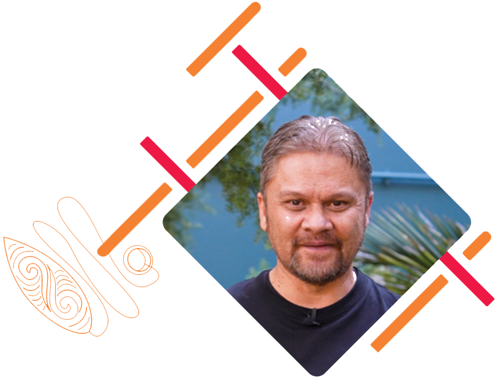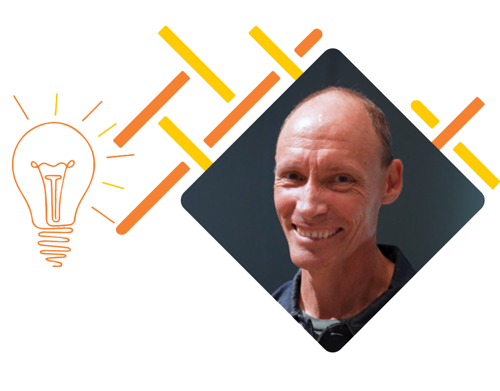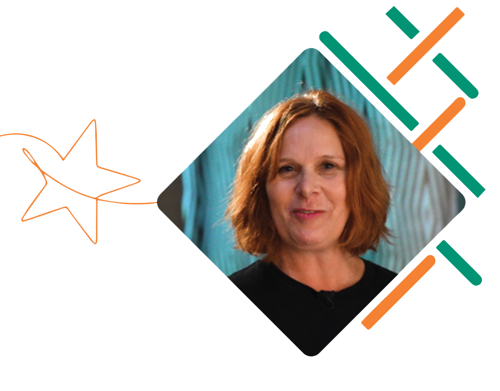Meet our team
Meet the Mīharo learning team - working across the Gallery and Puke Ariki Museum and Libraries.

Manu Bennett
Pouako Ara Māori, Puke Ariki Museum and Libraries
Ko Aotea te waka. Ko Ruapehu te maunga. Ko Te Awa Tupua o Whanganui
te awa. Ko Te Atihaunui a Pāpārangi te iwi. No Whanganui ahau.
Manu works across both the library and the museum, sharing his
pūkenga (skills) to support a diverse range of learners, including
those at Kura Kaupapa and bilingual students.
What inspired you to pursue a career as a museum/library educator?
Introducing people to the stories behind taonga, inspiring them to learn more and gain a deeper understanding of a subject/object.
What are some of the most rewarding aspects of your job?
Working with like-minded people and learning more about how things are done within the curatorial, exhibitions and the marketing teams.
What challenges do you face in your role, and how do you overcome them?
The best thing that helps overwhelming tasks is the team I work with and the cohesiveness that everyone brings that has streamlined this process.
What is a favourite exhibit or piece of art in the museum/gallery, and why does it resonate with you?
Honestly, my favourite space is the Puke Ariki Garden. It is an onsite, outside classroom that is surrounded by natural materials that we use as a living resource.
How has your perspective on art and history changed since you started working here?
After teaching in the classrooms for many years, I have used personal taonga and artifacts as hands-on learning tools. The museum has reminded me that there are more to taonga than just a learning tool. A great reminder.

Chris Barry
Educator, Govett Brewster Art Gallery | Len Lye Centre
Sharing Art Gallery experiences with the second generation of visitors, Chris is a true “Master of Explaining Tricky Stuff” and absolutely rules at creating the most engaging and fun creative experiences in the art room.
What inspired you to pursue a career as a museum/art gallery educator?
I enjoy helping people, especially tamariki, create their own meaningful experiences when face-to-face with art.
What are some of the most rewarding aspects of your job?
Kids desperate to share their ideas with classmates and their pride when showing me their creation. And working with my very generous fellow kaiako.
What challenges do you face in your role, and how do you overcome them?
Our biggest challenge is convincing teachers that the Gallery offers amazing learning experiences for their ākonga. The Arts are minority status subjects in mainstream education, so we need to help teachers see links to other curriculum areas.
What is a favourite exhibit or piece of art in the museum/gallery, and why does it resonate with you?
I try not to play favourites. I’m very fortunate at the Govett-Brewster | Len Lye Centre because most of exhibitions are very open propositions, their meaning has not been fixed, which is excellent ground for switching on the imagination and having an adventure for an hour and a half with tamariki.
How has your perspective on art and history changed since you started working here?
I’ve become more sensitive to the importance of art and art galleries connecting with communities. The opening of the Len Lye Centre has helped attract a wider audience, including education programmes linked to more curriculum areas.

Rebecca Fawkner
Learning Supervisor, Govett Brewster Art Gallery | Len Lye Centre and Puke Ariki Museum
Rebecca brings over 20 years of experience in the art gallery field. One of her proudest achievements is her book Ziggle, a Len Lye activity book based on learning activities at the Len Lye Centre.
What inspired you to pursue a career as a museum/art gallery educator?
From the time when I visited the Gallery and Museum as a kid at West End School it always looked like my dream job, and so it is.
What are some of the most rewarding aspects of your job?
When a student really gets it! Especially when a teacher tells me how delighted they were to see a new side of a student.
What challenges do you face in your role, and how do you overcome them?
Keeping up with all the administrative tasks required for communicating with schools and booking classes can be challenging. My heart sinks when I hear that schools have missed out on an opportunity. Our Mīharo programme is an exciting new initiative designed to help us spread the word more effectively.
What is a favourite exhibit or piece of art in the museum/gallery, and why does it resonate with you?
I recently spotted a wonderful carved figure from an ancient pataka in Takapou Whariki that was found on a farm near where I live. Investigating that area further and imagining the people living there is a delight.
How has your perspective on art and history changed since you started working here?
Don’t form an opinion too soon about an artwork. Often, I don’t connect with a piece initially, but then I change my perspective and start to enjoy it after hearing someone else explain why they love it.